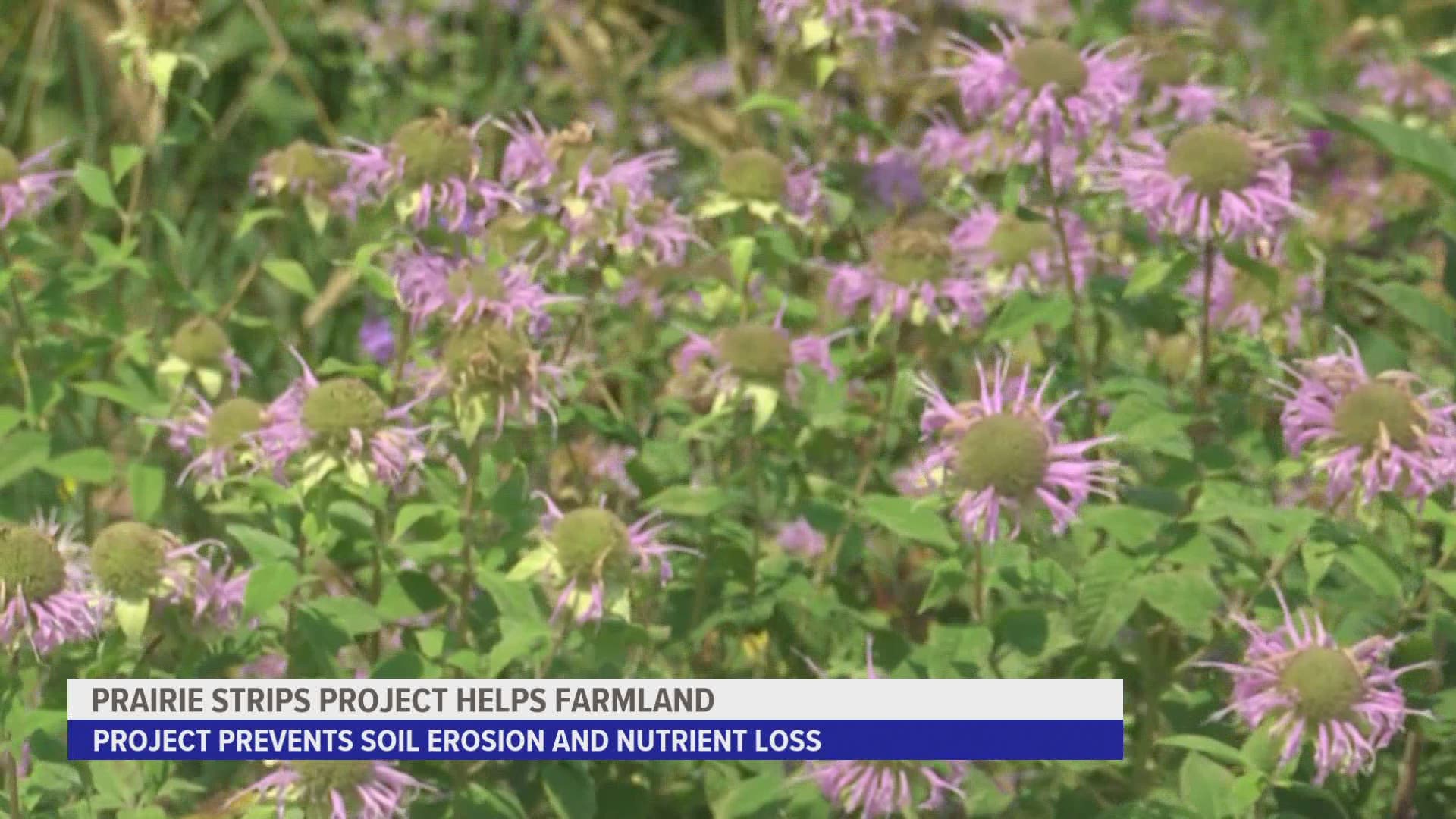AMES, Iowa — "First they sleep, then they creep, and then...they leap!"
Believe it or not, that saying is actually describing the growth of prairie grass over the years. It starts slow in the first year, spends the next expanding its roots, and then comes to life in a vibrant display by the third year.
And it turns out that the prairie offers a lot more benefits than just nice scenery.
Iowa State University's prairie strip project started 17 years ago, with the goal of using prairies to help reduce environmental damage. The idea was to use a little bit of under-performing farmland for some large benefits.
Dr. Matt O'Neal, an entomologist, explained that the project is, in some ways, a step back in time.
"We had something like 80% of Iowa covered in prairie," O'Neal said. "Now we're down to less than 1%. And if we want to counter some of the declines in soil quality and declining biodiversity, especially for things like pollinators, we need to get some of that land back into priority."
With that goal in mind, the prairie strip project was designed to balance the needs of multiple parties.
"Prairie strips is a way of integrating a conservation practice into farmland such that both people interested in conservation and the farmer can benefit," he said.
Analysis of the early results was promising and revealed a variety of benefits to the plan. An early experiment found that the addition of a prairie strip to underperforming farmland could reduce soil erosion or sediment loss by 90% and nutrient loss by up to 80%.
The project has been a success across state lines. Beyond the 40 farms in Iowa that have implemented prairie strips to their work, farmers in Wisconsin, Illinois, and Missouri are all joining in.
"Could say it's a win-win-win. It's helping farmers reach some of their economic goals reach some of their conservation goals. It's helping people interested in conservation, reverse declines in some key species like pollinators and monarchs, and it could accrue benefits to water quality and soil quality over time."
Watch: 'No Mow May' a way to protect environment, ISU professor says

